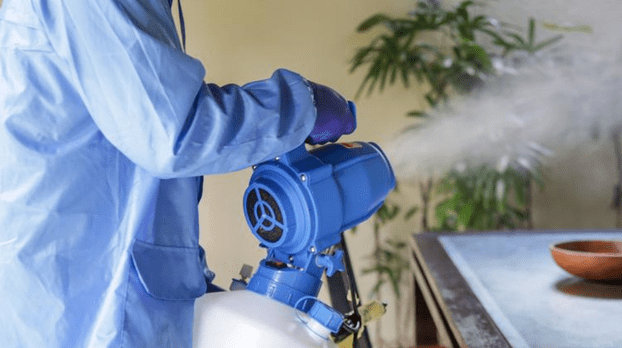SANITIZATION/DISINFECTATION TREATMENT

Due to germs and viruses, there can be several medical emergencies that can turned out to be an unprecedented world health dilemma to the entire world, wherein hygiene is the key defense against such crisis. Hence the term ‘sanitization’ has earned much attention.
Sanitization is a process that aims at killing and eradicating the bacteria, germs, pathogenic, and non-pathogenic microorganisms that grow on various surface tops. Now, this is a process that can be done with the use of a large number of products and chemicals
Sanitization is a preventive and strategic method to control the spread of SARS-CoV2. Since there is no foolproof method to tackle the present COVID-19 pandemic, sanitization has a centric role to play. There are various methods of sanitization for individuals, surfaces and ambience Disinfection services referred to professional cleaning services that aim to eliminate harmful micro-organisms, such as bacteria, viruses, fungi, and other pathogens, from surfaces and environments. These services are particularly important in setups where people congregate such as offices, schools, hospitals, and other public places.
Disinfection services typically use specialized equipment and cleaning products to ensure effective disinfection. Common disinfection methods include spraying disinfectant solutions, wiping surfaces with disinfectant wipes, and using ultraviolet (UV) light to kill microorganisms. It’s important to note that different disinfection methods may be more appropriate for different setups and types of surfaces, and that disinfection alone does not necessarily guarantee complete elimination of all harmful microorganisms.
Total Pest Control (A unit Of Total Services)
offer disinfection services, and it’s important to choose a reputable and experienced provider to ensure effective and safe disinfection. It’s also important to remember that regular cleaning and hygiene practices, such as hand washing and surface cleaning, are critical for maintaining a clean and healthy environment.Importance of Sanitization/Disinfection on Touchable Surfaces
The different surfaces with which we come in contact at home, office, personal or public vehicles, and public spaces are some of the most susceptible places through which microbes spread rapidly in healthy individuals. This is why the sanitization of touchable surfaces is more than imperative to stop the spread of dangerous and contagious diseases.What is the frequently required for Sanitization?
The frequency of sanitizing depends on the setting and the level of risk for infection. In general, high-traffic areas and frequently touched surfaces should be sanitized more frequently than areas with low traffic or less frequently touched surfaces. Here are some general guidelines for sanitizing frequency:In areas such as airports, bus and train stations, malls, and other public places, high-touch surfaces such as door handles, elevator buttons, and restroom fixtures should be sanitized multiple times per day.
In healthcare settings, such as hospitals, clinics, and dental offices, all surfaces in patient areas should be cleaned and disinfected after each patient visit. This includes exam tables, chairs, and equipment.
In areas where food is prepared, high-touch surfaces such as countertops, cutting boards, and utensils should be sanitized after each use.
In offices, high-touch surfaces such as desks, keyboards, and phones should be sanitized daily or as needed if someone is sick or if there is an outbreak.
In schools, high-touch surfaces such as desks, doorknobs, and light switches should be sanitized daily or multiple times per day if there is an outbreak.
